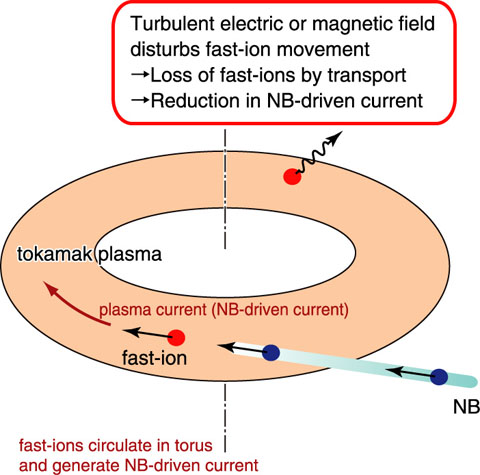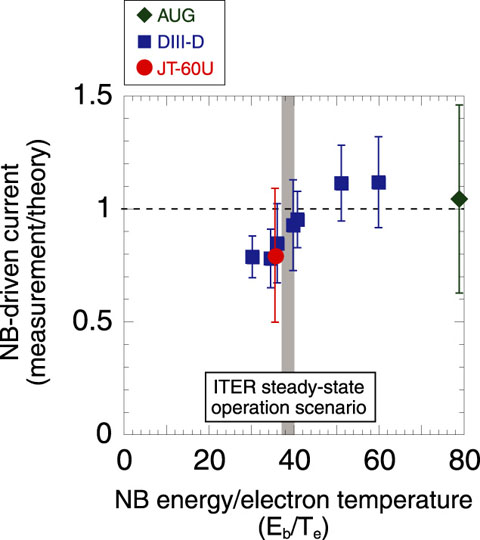
Fig.3-16 Principle of NB current drive and transport of fast-ions by turbulence in tokamak device

Fig.3-17 Dependence of ratio of experimental and theoretical NB-driven currents on NB-energy-to-electron-temperature ratio (Eb/Te)
In a tokamak device, the high-temperature plasma required for nuclear fusion reactions is confined by the magnetic field produced by the current in the plasma (plasma current). It is known that the plasma performance depends on the spatial profile of the plasma current. As shown in Fig.3-16, the neutral beam (NB) injected into the plasma is ionized and converted into fast-ions by collision with the plasma. The fast-ions circulate in the torus plasma and generate current, which is known as NB-driven current. The NB-driven current plays an essential role in optimizing and sustaining the plasma current profile suitable for confining high-performance plasma.
Checking the accuracy of the theoretically predicted NB-driven current is an urgent issue that must be addressed so that steady-state operation can be realized in the ITER. In order to validate the NB current drive theory, the experimentally measured NB-driven current must be compared with the theoretical current for a wide range of parameters by making full use of multiple tokamak devices with largely different NB parameters (e.g., NB energy, Eb) and plasma parameters. Hence, we planned and executed joint experiments among world-leading tokamaks, ASDEX-Upgrade (AUG, Germany), DIII-D (the United States), JT-60U (Japan), and MAST (the United Kingdom), leading the International Tokamak Physics Activity.
The measured NB-driven current mostly agreed with the theoretical value; however, at high electron temperature (Te) or plasma pressure discharges under strong-heating or strong-current-drive conditions, the measured value was slightly smaller than the theoretical value. Since this difference could be attributed to the plasma turbulence affecting the fast-ions, we investigated the decrease in the measured current with respect to the theoretical value as a function of the effect of electrostatic turbulence on fast-ions (Eb/Te). The results obtained for three tokamak devices (AUG, DIII-D, and JT-60U) showed the same trend (Fig.3-17). The measured current agreed with the theoretical value within the measurement error at the Eb/Te value expected for the ITER steady-state operation scenario (shown in gray in the figure). However, the measured current became smaller than the theoretical current with a further decrease in Eb/Te. In this regime, the effect of another type of turbulence, the electromagnetic turbulence, on the fast-ions was also pronounced, where the effect is measured in terms of the beta value characterizing the plasma pressure. Hence, we could not identify which turbulence, electrostatic or electromagnetic, was dominant in the experiments. We are currently examining the possibility of performing experiments in which the effects of Eb/Te and the beta value can be well distinguished with direct measurement of the turbulence intensity; in addition, we need to develop a method to evaluate the effect of turbulence on fast-ions.